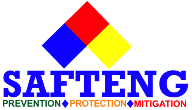Fundamentals of a culture of safety
An ideal culture of safety is the engine that continues to propel the safety management system towards the goal of maximum safety and health, regardless of the leadership’s personality or current commercial concerns. Such an ideal is hard to achieve in the real world, but it is nonetheless a goal worth striving for. The power…...
Fundamentals of a culture of safety Read More »
